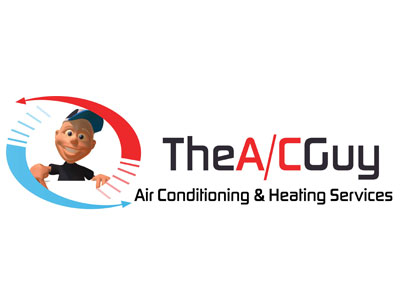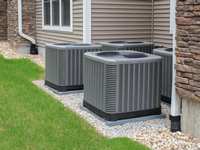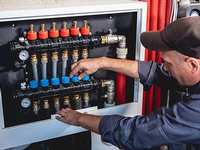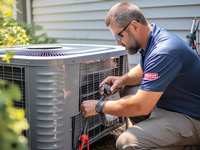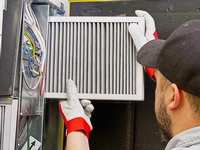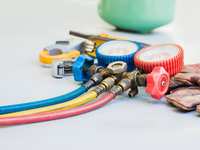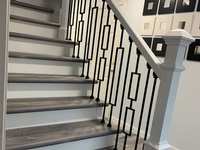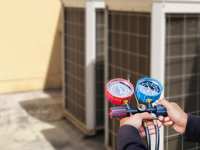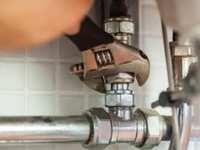How Do UV Lights Work in HVAC Systems?
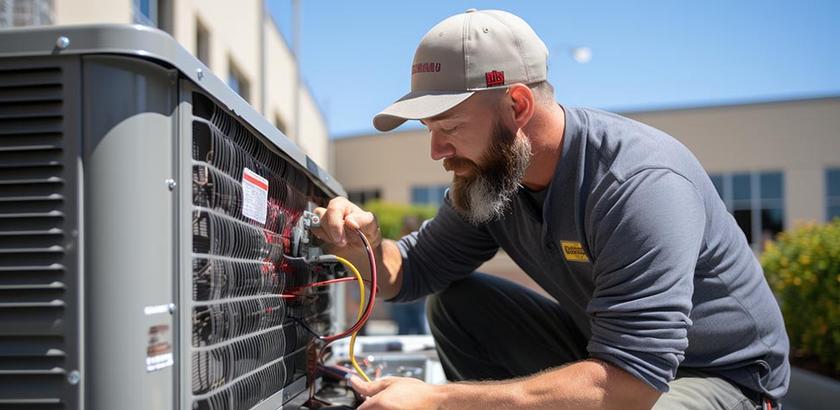
UV lights, or ultraviolet germicidal irradiation (UVGI), are designed to kill bacteria, viruses, mold, and other microbes in your HVAC system. UV-C bulbs emit UV light at a wavelength of 254 nanometers, which destroys the DNA of microorganisms and prevents them from reproducing.
There are two main types of UV lights for HVAC systems:
- Coil sterilization: This will be mounted inside your air handler unit near the evaporator coil. The UV-C light runs 24/7 to prevent microbial growth on the coil and kill contaminants passing through. This helps your AC run more efficiently, since a dirty coil reduces airflow and cooling capacity.
- Air sterilization: Installed in the return air duct, this turns on when your HVAC system is running to sterilize the air before it's pulled into your system. It also helps disinfect components near the light.
For UV lights to work properly, your HVAC ductwork must be well sealed. Any leaks or gaps can draw in untreated air and microbes, reducing effectiveness. It's best to have an HVAC pro inspect and seal your ducts before installing UV lights.
The benefits of UV HVAC lights include:
- Preventing mold, mildew, and bacteria growth in your AC.
- Neutralizing volatile organic compounds (VOCs) like paint fumes, cleaning chemicals, and air fresheners.
- Killing viruses, bacteria, and other pathogens.
- Helping your AC run more efficiently by preventing buildup on the evaporator coil.
While UV lights are very effective at disinfecting the air and HVAC system, they do not remove allergens like dust, dander, and pollen. For the best indoor air quality, combine UV lights with high-efficiency air filters.
Benefits of Adding UV Lights to Your HVAC
Adding UV lights to your HVAC system comes with some major benefits for your home and family. For starters, UV lights prevent the growth of mold, mildew, bacteria, and other microbes in your air ducts and AC unit. These thrive in the damp, dark environment of an HVAC system and spread like wildfire. UV lights zap them before they cause damage, keeping your system clean and your indoor air fresh.
UV lights also eliminate volatile organic compounds (VOCs) like paint fumes, cleaning products, and air fresheners. These chemicals off-gas in your home and get sucked into the HVAC system. UV lights break them down so you're not breathing them in.
Germicidal UV lights sterilize airborne viruses, bacteria, and other germs as the air flows through your HVAC system. This helps reduce the spread of illnesses in your home, especially important for family members with weakened immune systems.
An added benefit is that UV lights help your AC run more efficiently by preventing buildup on the evaporator coil. Excessive unwanted deposits on the coil blocks air flow and makes your AC work harder, which can lead to costly repairs. UV lights solve this problem and keep things running smoothly.
While UV lights offer many advantages, they do have some limitations. They won't remove larger allergens like dust, pet dander, and pollen from the air. For the best indoor air quality, pair UV lights with a high-efficiency air filter.
UV lights require professional installation to work properly and safely because only a trained HVAC technician has the skills to install the lights, wire them to your system, and thoroughly clean and inspect your ductwork. DIY installation of UV lights can be dangerous and void product warranties.
So, do UV lights in HVAC systems really work? Absolutely, when installed and used properly. They provide natural and effective air purification for a healthy home environment. For many homeowners, the benefits of UV lights far outweigh the costs.
Limitations of UV HVAC Lights
While UV lights in HVAC systems are effective at sterilizing contaminants and allergens, they do have some limitations to be aware of.
UV air purifiers can only kill germs and microbes that actually pass through the UV-C light inside your HVAC system. If your air ducts have any holes, tears, or gaps, contaminants like dust, mold, and mildew spores can sneak in without going through the UV light. Before installing a UV HVAC system, it’s a good idea to get your air ducts properly sealed to prevent unwanted particles from entering your HVAC system.
Although UV lights kill germs, they don’t actually remove them or other contaminants from the air. If you suffer from allergies, the dead germs and debris may still bother you. For the best results, pair a UV HVAC light with a high-efficiency air filter, like a HEPA filter, that can capture small particles like pollen, dust, and pet dander. The higher the MERV rating of the air filter, the more effective it will be at removing allergens and providing relief for allergy sufferers.
For the UV light to properly sterilize the air, the bulbs must be bright. Once the bulbs start to dim, they become far less effective at killing germs and need to be replaced. Replacing the UV HVAC bulbs requires an HVAC technician and can cost between $200 to $500, so you’ll want to factor in the ongoing cost of bulb replacement before installing a UV HVAC system.
Finally, although UV bulbs are relatively inexpensive, the fixtures required for a UV HVAC system typically last 3 to 5 years before needing replacement. The total cost to install a UV HVAC light system ranges from $500 to $1500, so you’ll want to consider if the cost is worth it for your needs and budget. For some homeowners, portable room air purifiers may provide a more budget-friendly solution.
How to Install UV Lights Properly in HVAC?
Installing UV lights in your HVAC system properly is key to reaping the benefits. As a DIY task, it can be tricky, so calling in a pro is your best bet. At The AC Guys, we install UV Lights for affordable pricing.
A technician will first inspect your entire HVAC system to ensure there are no leaks or damage that could prevent the UV lights from working effectively. They’ll then determine the best placement for the UV bulbs in your system based on the layout. The most common spots are near the evaporator coil or in the return air duct.
For evaporator coil placement, the technician will mount the UV lights near the coil, and then wire them to your HVAC unit so they turn on whenever the system runs. This helps prevent mold, bacteria, and other debris from building up on the coil, allowing your AC to run more efficiently.
If the lights are being installed in the return air duct, they’ll mount them inside the duct and wire them to your HVAC system. This allows the UV lights to sterilize the air before it enters your HVAC unit and recirculates through your home. This can help eliminate viruses, bacteria, mold, and VOCs from the air.
As a safety precaution, the technician will install shields or barriers to prevent the UV rays from escaping into occupied areas of your home. They’ll also securely mount the UV lights to prevent them from falling or shifting into unsafe positions.
Calling in an HVAC pro to install your UV lights properly is the smartest way to gain all the benefits these systems offer while avoiding potential safety or performance issues from an improper DIY job. The initial cost of professional installation will pay off through improved indoor air quality, lower utility bills, and fewer HVAC repairs or service calls over the lifetime of your UV light system.
Conclusion on UV Lights for HVAC
So there you have it, the lowdown on UV lights and HVAC systems. While the science behind UV light disinfection seems sound, the reality is that UV lights may not live up to the hype for most homeowners. For others, it may be an amazing investment. The effectiveness depends on many factors like proper installation, bulb placement, airflow, and run time. If you decide to pursue getting UV lights for your HVAC, call The AC Guys for installation, maintenance, and replacement services at affordable prices.

